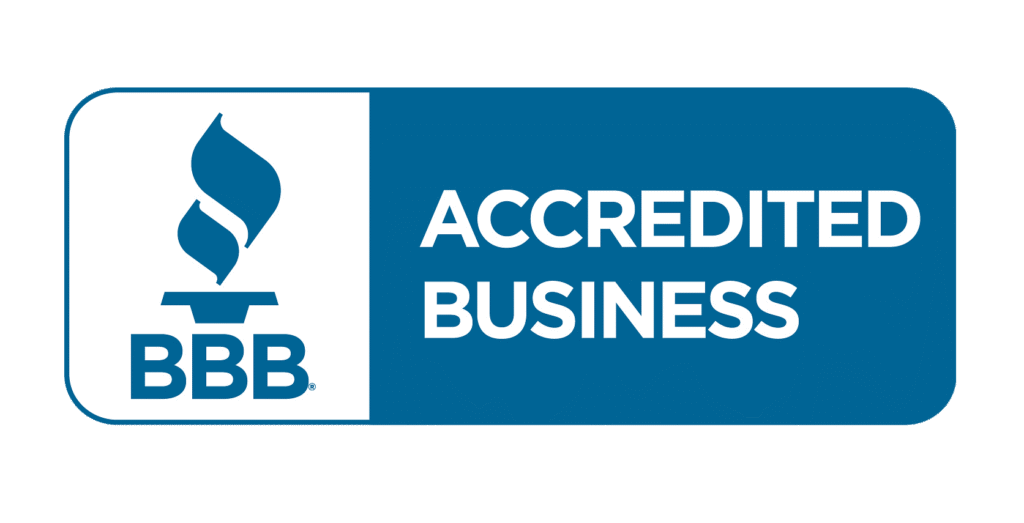Basement Flooding North York
24/7 Basement Flooding Response | North York
Basement flooding North York can quickly turn from a minor concern into a devastating problem for North York residents. Water invading your home’s lowest point gives you only 72 hours before mold starts growing. This creates structural damage and poses serious health risks.
Basements become the first victims, in fact, in any water damage situation. Heavy rainfall, foundation cracks, or sewer backups can trigger these problems.
Standing water in basements poses serious dangers that require quick action. Our team understands the urgency and reaches your location within an hour after your call.
The cleanup costs vary significantly, ranging from $1,000 to a staggering $100,000, depending on the severity of the damage. North York’s basement waterproofing costs typically range between $50 to $300+ per linear foot.
Many homeowners feel overwhelmed by water damage situations. The silver lining is that proper maintenance and protective measures can prevent most basement flooding North York incidents.

Contact Us Today
What Causes Basement Flooding in North York?
North York homeowners deal with unique basement flooding challenges because of the area’s geography, climate, and infrastructure. Learning about these causes will help you protect your property effectively.
Heavy Rainfall and Poor Drainage Systems
Toronto’s changing climate has increased the risk of basement flooding in North York by a lot. Environment Canada reports a 5% increase in annual precipitation in the last decade.
This creates perfect conditions for water infiltration. Recent storms dropped between 30-50 millimetres of rain in short periods. These downpours overwhelm drainage systems throughout the area.
The city’s distinctive landscape makes these problems worse. North York sits on a network of buried streams and rivers, which creates natural water management challenges. Areas around Downsview and York Mills face extra challenges because older sewer systems can’t handle intense rainfall. York Mills’ location in a valley creates additional pressure from water runoff that strains basement foundations.
Poor lot grading sends water toward homes instead of away from them. This basic drainage problem lets rainwater soak the soil around your foundation. Engineers call this hydrostatic pressure – a force that pushes against your foundation from all sides.
Foundation Cracks and Structural Issues
Foundation problems cause many basement floods in North York. Horizontal cracks in foundation walls show serious structural problems and create major water entry points. These cracks usually develop from:
- Natural settling of the house over time
- Soil erosion from poor drainage
- Expansion and contraction occur because of temperature changes.
- Tree root pressure against foundation walls
- Poor original construction quality
Small hairline cracks can let surprising amounts of water into your basement during heavy rain. Areas with clay-heavy soils, which are common in parts of North York, face higher risks. These soils expand dramatically when wet and increase pressure on foundations.
Many North York homes built before 1990 still use their original waterproofing systems. These tar-based materials usually fail after 20-30 years. This leaves foundations more vulnerable to water damage.
Sump Pump Failure and Sewer Backups
Failed sump pumps often cause basement flooding directly. These important devices need regular maintenance – experts suggest checking them twice yearly. Homes with high water tables or frequent rain exposure need more frequent checks.
Winter brings its challenges. Discharge pipes can freeze and prevent water evacuation, which might burn out the pump motor. A heat cable inside the pipe (like those used for roof de-icing) can prevent this issue.
Sewer backups pose another major flooding risk in North York. The city’s aging sewer system, with parts over 100 years old, often gets overwhelmed during heavy rainfall. Water travels backward through sewer lines into connected properties. Older North York neighbourhoods with combined storm and sanitary sewers face higher risks of this type.
Appliance Leaks and Plumbing Failures
Household appliances and plumbing problems can flood basements even without rain. These leaks usually start small – behind refrigerators, under washing machines, or beneath sinks. Watch for warning signs:
- Spongy spots underfoot
- Sour, musty odours
- Cabinets that swell or peel
- Faint stains creeping up walls
Ignoring small issues can lead to serious problems like structural rot, mold growth, or electrical hazards. Pipes might burst without warning in freezing temperatures. Hot water tank failures can release hundreds of gallons of water quickly.
A dramatic example happened in February 2025 on Pelmo Crescent in North York. A water main break flooded multiple basements with up to two feet of water. This whole ordeal required an emergency response and left residents worried about structural damage to their street.
How Do Experts Handle Flooded Basement Cleanup?
Professional restoration companies use a systematic process to clean flooded basements. This process gives a complete water removal and stops long-term damage. Mold can start growing within the first 48 hours after flooding if moisture stays present.
Water Extraction and Damage Assessment
Certified experts start with a detailed assessment when they respond to basement flooding in North York. They first turn off the electricity to prevent electrical shock and check structural stability before moving forward. The team then groups water into three categories: clean water, gray water (containing contaminants), or black water (sewage-contaminated). This helps them decide the right cleaning protocols.
The quickest way to remove basement water involves industrial-grade equipment that’s nowhere near what consumers can buy. Teams use submersible pumps and powerful wet/dry vacuums to remove standing water faster. They use thermal imaging cameras and moisture meters to find hidden water in walls and under floors. This careful approach lets experts remove thousands of gallons per hour and significantly reduces potential damage.
Disinfection and Mold Prevention
The disinfection process starts right after water extraction. Teams disinfect all surfaces that floodwater touched. They usually use a bleach solution (about one cup per gallon of water) on hard surfaces. This helps kill bacteria and prevents mold from growing.
Teams must wear protective gear during this phase. Waterproof boots, rubber gloves, and face masks are crucial, especially with sewage contamination. Porous materials like carpeting, upholstery, and drywall exposed to contaminated water need special attention:
- Teams can often save items soaked for less than 24 hours
- Materials wet for more than 48 hours usually need disposal
- Porous building materials that contact sewage always need replacement
North York Drying Process
The drying phase uses commercial-grade equipment placed strategically. Air movers and dehumidifiers create conditions that stop mold growth. Teams place dehumidifiers six to eight inches from walls and run them non-stop for about 48 hours. Restoration experts keep checking moisture levels with specialized meters throughout this process.
Complete drying might take several days to six weeks, based on severity and outside humidity. Teams pay special attention to hidden spots where moisture could stay behind appliances, under flooring, and inside wall cavities. Many companies use specialized drying equipment to target these hidden spaces.
North York Water Damage Restoration – Materials and Contents
The final phase brings the basement back to its pre-flood condition. Teams start with ceilings to avoid structural issues and work their way down. They replace damaged drywall if it swells or sags more than 3/8 inch from the baseline.
Teams record each step for insurance reasons. They provide complete details on what you can save and what you need to replace.
They can often clean and fix hardwood furniture and non-porous items. However, you need to replace severely water-damaged materials, like insulation.
Expert intervention is a vital part of handling basement flooding. Their specialized equipment, systematic methods, and deep knowledge help prevent additional damage and ensure complete restoration.
Why Is Immediate Action Critical After a Basement Flood?
Quick action makes all the difference when you find water in your North York basement. The damage and health risks depend on what you do in the first 24-48 hours after water gets in.
Dangers of Standing Water in the Basement
Standing water creates more problems than just property damage. Water that touches electrical systems often causes dangerous shocks. So your first step should be to turn off all power. On top of that, it can put out pilot lights on gas appliances and let gas leak into your home.
Water seeps into building materials and weakens your home’s structure. Wood starts warping and rotting while concrete breaks down in just days. The foundation’s damage stays hidden until major structural issues appear.
Your flooded basement rarely has clean water. It usually contains sewage, chemicals, and other harmful substances. These contaminants sink deep into your home’s structure and can make areas unlivable even after the water dries up.
How Delays Increase Water Damage Repair Costs
The cost of waiting grows fast:
- Water damage costs can triple in just 24-48 hours
- Clean water becomes gray or black water within 48 hours
- Building materials break down and need replacement
- Insurance might not pay if you wait too long
The longer water sits, the harder it becomes to clean up. What starts as simple water removal turns into major repairs, mold cleanup, and sometimes a complete basement overhaul.
Health Risks from Mold and Bacteria
The health risks from delayed cleanup are the biggest concern. Mold starts growing in just 24-48 hours.
It releases spores that cause breathing problems and allergic reactions. People with asthma suffer even more. Children, pregnant women, and anyone with breathing issues face higher risks.
Sewage-contaminated water brings dangerous bacteria and viruses that need professional cleaning. DIY cleanup usually fails to remove these harmful germs. Experts say you need full protection if you touch anything in floodwater. This includes rubber boots, gloves, eye protection, and masks.
The Environmental Protection Agency warns against touching flood water because of electrical dangers and harmful substances. Professional water removal services are vital to keep you safe.
What Are the Best Ways to Prevent Basement Flooding?
North York homeowners need a layered strategy to protect their basements from flooding. The right protection measures can reduce water damage risks by a lot and help avoid getting pricey repairs.
Installing Sump Pumps and Backwater Valves
Sump pumps remove standing water that collects in basements. Submersible pumps are good for hidden installation. Pedestal pumps last longer, about 25 years, while submersible pumps last only 5 years. Toronto’s Basement Flooding Protection Subsidy Program lets homeowners claim up to CAD 4737.42 per property for flood protection devices.
Backwater valves stop sewage from backing up into your home during heavy rain. The City pays 80% of installation costs, up to CAD 1741.70. Note that you should avoid using plumbing fixtures when your backwater valve activates because water won’t drain properly.
Exterior and Interior Basement Waterproofing
To waterproof the outside, you need to dig around the foundation. This cost-effective method helps stop water from getting in. Interior waterproofing includes wall sealants and drainage systems that channel water to sump pumps.
Regular Maintenance of Gutters and Drainage
Working gutters guide rainfall away from your foundation. You should clean them three times yearly during spring, fall, and winter to avoid clogs. Your downspout extensions should reach 6-10 feet from your home.
One inch of rain on a standard roof collects over 600 gallons of water. This shows why proper drainage is important.
How to Flood-Proof a Basement Effectively
To get complete basement protection:
- Make sure the ground slopes away from your foundation
- Put in French drains as escape routes for excess water
- Add waterproof coatings to foundation walls
- Think about window well drains or covers to stop leaks
- Check foundation drains and sumps often
Following the manufacturer’s guidelines for maintaining flood prevention devices is a vital part of long-term protection. These measures create multiple defence layers against basement flooding North York.
Who to Call and What to Expect During Basement Flood Repair
Basement flooding in North York requires reliable professional help. The right expert assistance can make a significant difference in restoration results and costs.
Choosing a Certified Water Restoration Company
Your most important decision after basement flooding North York is picking a qualified restoration service. Look for companies that have proper certifications from organizations like the Institute of Inspection, Cleaning and Restoration Certification (IICRC). These credentials show that technicians know industry standards and have specialized training in water damage restoration.
The best companies offer 24/7 emergency services with guaranteed response times because quick action reduces damage. Local expertise adds value, too. Restoration companies that know North York understand regional issues and local building codes better. Check their track record with similar flooding cases and ask for client references to ensure quality service.
Understanding Insurance Claims and Coverage
Standard home insurance policies usually cover sudden water damage from indoor plumbing failures, appliance malfunctions, and water main breaks. Some types of flooding need optional coverage:
- Sewer backup coverage: Protects against damage from backed-up sewers and drains
- Overland flood coverage: Covers damage from bodies of freshwater overflowing onto dry land
Many homeowners believe their standard policies cover all water damage. The reality is that basement flooding North York from spring thaw or heavy rainfall often needs extra coverage. Talk to your insurance representative about your specific policy details to get complete protection.
Estimating Flooded Basement North York Cleanup Cost
The Insurance Bureau of Canada puts average flooded basement cleanup costs at CAD 59,914.49. These costs change based on:
- Flood severity and water contamination level
- Basement size and affected materials
- The duration the water remained standing
- Required restoration services
Prevention costs much less, at under CAD 348.34 combined. Backwater valves are a great example—with city subsidies up to CAD 1,741.70, you get solid protection that costs nowhere near what repairs would.
Good restoration companies bill insurance providers directly and help with claims paperwork. Read contracts carefully to understand payment terms, completion timelines, and warranties for services and materials.
Contact CPR24 Restoration for North York Flooded Basement Services!
North York homeowners face serious threats from North York basement flooding because of the area’s unique geography and climate. This piece looks at major flooding causes: heavy rainfall, foundation cracks, sewer backups, and appliance failures. Of course, knowing these risk factors helps you build your first line of defence against water damage.
Basement flooding North York needs quick action. You can reduce health risks and costs by acting within 24-48 hours. Waiting too long leads to mold growth, structural damage, and expensive repairs. Smart homeowners keep emergency restoration numbers handy before problems appear.
Prevention costs nowhere near as much as restoration. Basic maintenance, like cleaning gutters three times a year and proper lot grading, can save you thousands in damage. On top of that, the city makes protective installations like backwater valves and sump pumps more affordable through subsidies. These measures give you peace of mind during heavy rains.
Even with your best prevention efforts, flooding might still occur. That’s when you need certified restoration experts. They have specialized equipment, proven processes, and deep knowledge that most homeowners don’t have. So your basement bounces back faster and with fewer issues under professional care.
Your insurance coverage needs attention before disaster hits. Many homeowners think their standard policies cover all water damage. The reality is different – you might need specific endorsements for complete protection. A good chat with your insurance rep can protect your property and finances.
Basement flooding North York will always be a risk. But homeowners who combine knowledge, prevention strategies, and professional connections can handle these challenges better.
Your home needs constant attention. Investing in prevention and quick emergency response helps reduce damage. This also improves property value and keeps your family healthier.
FAQs on Basement Flooding North York
Q1. What immediate steps should I take if my basement floods?
Remove standing water as quickly as possible using pumps or wet/dry vacuums. Dispose of contaminated items that you can’t dry, and clean and disinfect salvageable possessions. Wear protective gear like boots, gloves, and a mask during cleanup. Contact a professional restoration service for thorough water extraction and damage assessment.
Q2. How can I prevent basement flooding in North York?
Install a sump pump and a backwater valve. Make sure to waterproof both the outside and inside of your home.
Regularly clean and maintain your gutters and drainage systems. Also, ensure the ground slopes away from your foundation. Consider additional measures like French drains and window well covers for comprehensive protection.
Q3. What are the health risks associated with a flooded basement?
Flooded basements can lead to mold growth within 24-48 hours, causing respiratory problems and allergic reactions. Contaminated water may contain harmful bacteria and viruses. These health hazards are particularly dangerous for children, pregnant women, and individuals with respiratory conditions.
Q4. Does home insurance cover basement flooding in North York?
Standard home insurance policies typically cover sudden water damage from indoor plumbing failures or appliance malfunctions. However, flooding caused by heavy rainfall or sewer backups often requires additional coverage. Reviewing your policy details with your insurance representative is crucial to ensure comprehensive protection against basement flooding North York.
How It
Works
Enter Details
Please provide as much information as possible about your emergency service and answer a few questions. Within minutes, we will be able to provide you with an expert. It’s easy and quick!
Book Assessment
Hire Us
It’s crucial to realize that several things influence the ultimate cost when estimating the cost of water damage repair. To restore your property to its pre-damage state, CPR24 Restoration is here to help you at every stage of the procedure. Let’s examine the main factors that affect the cost of water damage restoration in more detail.
- Area
One of the most important elements influencing restoration costs is the extent and size of the water-damaged region. Repair expenses increase with the size of the impacted region, whether it’s a minor leak or widespread flooding. The total cost of water damage restoration rises as larger areas require more work, supplies, and time to repair.
- Location
Due to geographical variations in labour costs, material availability, and situational urgency, geographic location might affect the cost of water damage repair. Because of the expense of living and logistics, properties in urban regions may have greater service fees than those in rural locations.
- What category is the water?
The type of water that caused the damage is crucial. Three criteria are commonly used to classify water damage:
Since Category 1 (Clean Water) uses water from clean sources like burst pipes or dripping faucets, it is the least expensive to clean.
Water from appliances or potentially contaminated sources, such as washing machines, sump pumps, and dishwashers, falls under Category 2 (Grey Water).
Category 3 (Black Water): This type of water, which originates from contaminated sources such as sewage, floodwater, or standing water in basements, is the most dangerous and costly to clean up. The cost is increased by the need for specific cleaning and sanitization for Category 3 water damage.
- Is there any water left?
Before beginning any additional repairs, any remaining water in the impacted areas must be removed. Because specialists need to use specialized equipment, including industrial-grade pumps and dehumidifiers, to extract the water and completely dry out the damaged areas, standing water might result in higher repair expenses. Long-term untreated water can encourage the formation of mold, which may necessitate more remediation and raise repair expenses.
- Other elements are present
The following additional variables could affect the price of restoring water damage:
Structural Damage: The walls, floors, and ceilings must be replaced or restored if water has weakened their structural integrity.
Growth of Mold and Mildew: Mold and mildew can appear if water damage is not addressed for an extended length of time. The overall cost of repair may rise dramatically with professional mold removal.
Materials Affected: If damaged beyond repair, some materials, like insulation, drywall, and hardwood floors, may need to be replaced completely. The cost of repairs increases with the cost of the materials.
Labour Intensity: Labour expenses will be impacted by the intricacy of the repair procedure, which may include demolition, cleaning, drying, and rebuilding.
- Emergency Services
Unexpected water damage can occasionally occur, necessitating prompt emergency water extraction and remediation services. Since emergency services must be provided quickly to stop additional damage, such the growth of mold or long-term structural problems, they are frequently more expensive.
Your property may suffer major repercussions from water damage, including mold growth and structural problems. To help you take preventative action and deal with issues before they become worse, CPR24 Restoration is here to explain the most typical causes of water damage. Let’s examine the main reasons why water damage occurs and how they may affect your house or place of business.
- Severe weather
One of the main sources of water damage is severe weather, such as hurricanes, heavy rain, or snow. Drainage systems can be swiftly overloaded by water, resulting in roof leaks, basement flooding, and even wall and floor damage. Extreme weather-related water damage is especially likely to occur in coastal locations or areas that get high rainfall.
- Clogged gutters
Gutter blockages caused by leaves, mud, and branches make it difficult for them to efficiently redirect water away from your house. This may cause gutters to overflow, allowing water to infiltrate into your property’s foundation and walls. Water seeping into your home from clogged gutters can eventually seriously harm your roof and even the interior of your house.
- Leaking pipes
Leaking or ruptured pipes are among the most frequent and frequently overlooked causes of water damage. Anywhere in your house, including behind walls, in basements, and beneath sinks, leaking pipes might appear. If a little leak is not fixed, it might cause significant water damage. In addition to age, corrosion, and inadequate installation, cold temperatures in the winter are also frequent causes of pipe leaks.
- Washing machine leak
Another common cause of water damage in houses is washing machines. Large volumes of water can pour into your floor from a malfunctioning hose, a worn-out gasket, or an overloaded machine, damaging nearby walls, hardwood floors, and carpets. To stop leaks, it’s critical to routinely check the hoses and connections on your washing machine.
- Condensation from AC
One prevalent yet obscure source of water damage is condensation from air conditioners. Improper drainage of your air conditioner can lead to the buildup of moisture and damage to adjacent walls, ceilings, and floors. This can eventually cause mould and mildew to grow and have a major impact on the air quality in your house. Preventing this problem requires routine cleaning and maintenance of your air conditioning system.
- Blocked drains
Water backup from clogged or blocked drains in sinks, showers, or toilets can harm ceilings and floors. Slow water drainage from blocked drains can cause standing water that could overflow and seep into floors and walls. To stop water buildup and any water damage, it’s critical to routinely remove any blockages in the drain.
- Malfunctioning sprinkler systems
Although automatic sprinkler systems are meant to hydrate your grass, they can cause serious water damage if they don’t work properly. Inadequate water distribution or sprinkler system leaks can cause an excessive amount of moisture to accumulate around your home’s foundation, which can lead to mould growth, wet basements, and foundation fractures. Costly damage to your sprinkler system can be avoided with routine testing and maintenance.
- Leaking water heater
If it starts to leak, your water heater is another typical cause of water damage. The surrounding area may flood due to a leaking water heater, causing damage to the walls and floors. Age, rust, and sediment accumulation can erode the water heater over time, raising the possibility of a leak. Significant damage from a broken water heater can be avoided with quick repairs and routine inspections.
- Roof Leaks
Water infiltration can occur from a roof that is old or broken, particularly during storms or periods of intense precipitation. Water seeping into your attic, walls, and ceilings due to roof leaks can result in mould growth, structural damage, and electrical risks. It’s critical to conduct routine roof inspections and fix any gaps, cracks, or missing shingles before they cause serious water damage.
- Sewer Backup
One of the most expensive and painful types of water damage is a sewage backlog. Basements and lower-level rooms may flood as a result of wastewater flowing back into your house due to clogged or damaged sewer lines. In order to reduce health risks, this kind of water damage is classified as black water (Category 3), which is extremely contaminated and necessitates professional cleanup and remediation.
There’s no denying that water damage can pose a number of serious health risks. If your home has been flooded with filthy water, you should be very concerned. Flood damage water is divided into three categories:
- Category 1: “Clean” water from hygienic sources, such as your home’s plumbing. Although this water has not yet been utilized in your home, it is still fresh and pure.
- Category 2: “Grey” water from outside your home, such as seepage from the earth into your basement and post-use water from home appliances.
- Category 3: Unsanitary sources of “black” water that may contain human or animal waste. This water comprises sewage-contaminated water as well as floodwater from rivers and lakes. This water should be treated as though it were poisonous.
If you’re dealing with Category 3 water, you should take a step back and ask for help right away. This water is potentially hazardous to touch or breathe, and anything it has come into contact with must is disposed of or thoroughly cleaned and sterilized. A skilled water damage restoration business will be able to tell you whether or not your contaminated possessions may be saved.
Floodwaters from outside your home can bring a wide range of germs, poisons, mold, and even fungi, even if they don’t contain raw sewage. If your home was flooded with anything other than clean tap water, your family could be exposed to these contaminants, necessitating sterilization operations.
Mold development is the most well-known threat of water damage. Mold spores might start to grow as soon as 24 hours following water damage. Mold has been linked to a variety of health conditions, ranging from allergy-like symptoms to major respiratory troubles and even neurological damage in some people. Mold isn’t something you want to deal with, so if you suspect mold is forming as a consequence of water damage or water that has been left sitting for more than 24 hours, the best thing you can do is hire a mold remediation company.
These toxins are obviously not things you want to sit around and multiply in your home, so dealing with water damage as soon as possible is critical. Water damage, on the other hand, isn’t just a health hazard in the form of biohazards; it can also undermine your home’s structure and components.
Backups of sewage are a nightmare. We don’t have to tell you that, though. If you’re having one, you probably have only one question on your mind. So, what should I do now? It’s easy to feel helpless in the face of the situation. It’s possible that your basement or living space is flooded. Keep calm, remember that things can be fixed, and continue reading.
If sewage backup is a recurring problem in your home, consult a plumber for a diagnosis and treatment plan. Even if the issue is not on your property, enlisting the help of a plumber can typically expedite the problem’s resolution. A plumber can frequently give evidence that the sewer problem is not on your property.
- Power down to the affected area.
- Stop wasting water.
- Put on your personal protection equipment.
- For insurance purposes, take images or videos of the affected area.
- Any damaged property should be disposed of.
- Using a shop vac, remove any standing wastewater or sewage.
- Bleach solution to mop
- Any wood or organic surfaces should be sprayed with a mold protection solution.
- Make use of a dehumidifier.
Sewage Backup and Flood Prevention
- Inspection of the Plumbing System on an Annual Basis
- Cleaning of Drains
- Installation of a backwater valve
Water damage in your home can be caused by a variety of factors. It could be the result of a plumbing issue, an overflowing bath, or floods caused by inclement weather. Whatever the cause of the damage, it’s critical to be aware of the warning signals and not to dismiss them when you see them. Pretending it isn’t there could result in further harm and troubles for your home and family. Here’s why, if you notice water damage, you shouldn’t disregard it.
- Structural Damage
- Mold and Mildew
- Health Problems
- Bad Smells
- Stains
- Increased Repair Costs
- Electrical Damage
- Water Damage Could Indicate a Bigger Problem
- Your Water Bills Might Be Too High
- It Can Worsen Quicker Than You Think
- Your Home’s Appearance Suffers
- There Could Be a Lot of Unseen Damage
- Your Insurance Could Be Affected
- Flooding Can Cause Foundation Damage
- Fixing Water Damage Prepares You For Future Problems
Water damage requires immediate action. As soon as you notice a leak, flood, or overflow in your commercial and residential property, you should contact an emergency restoration company for water damage removal.
As you await the quick arrival of the IICRC-certified restoration team at CPR24 Restoration, you should turn off any electrical breakers in the affected area, and stay away from hazards.
Any furniture that has been affected or damaged, such as carpet, couches, tables, flooring, and other building materials, should be removed promptly. Dispose of any contaminated materials in a safe manner. This will help minimize the need for mold removal.
Now that the area is clear, it is time to extract the water and dry the affected areas with the appropriate equipment. While a dehumidifier may be accessible to the general public, it may be tough to find pumps and blower fans that are readily available. By contacting CPR24 Restoration promptly, our team will arrive on-site in a timely manner to manage the water damage cleanup process, mold removal if necessary, and even reconstruction.
Secondary water damage is the type of damage that can occur as a result of floods and leaks such as mold and electrical issues. These are a noteworthy issue for property owners, particularly if it isn’t tended to in a timely manner. Secondary water damage can cause the development of mold growth, oxidized metal, decayed wood, and bowing floorboards.
How Does Secondary Water Damage Happen
After water damage occurs in a home, mold growth soon follows. Within two days, the first signs of mold growth can become apparent. If not addressed promptly, mold can spread extensively. Mold spores can cause respiratory problems, allergies, and other health issues for occupants. To remove the mold thoroughly and protect against future growth, homeowners should consult with the mold removal pros at CPR24 Restorations. Our professionals are able to eliminate any existing mold safely and take the necessary steps to prevent further mold from developing. Our assistance ensures that water damage will not lead to larger health concerns down the road.
Oxidized metal is another kind of secondary water damage that can develop. If metal is exposed to moisture for a prolonged time, it will start to rust, weakening the material and potentially causing deterioration. Decayed wood is also a frequent problem that can surface after water damage has struck. It can undermine the integrity of a structure and generate an unsafe condition for occupants.
Warped and uneven floorboards can develop as another consequence of secondary water damage. If water infiltrates between floorboards, it has the potential to distort their shape and cause them to lift, posing stumbling risks and allowing further destruction to take place if not handled without delay.
Protect Your Property with Water Damage Restoration
It’s important to address secondary water damage promptly to prevent further damage and potential health hazards. Homeowners should consult with the professionals at CPR24 Restorations, we can help you identify and address these issues effectively and safely. By taking prompt action, homeowners can minimize the damage and ensure that their homes remain safe and healthy places to live.
24/7 Basement Flooding North York
Contact Us Today


Frequently Asked Questions
We Partner With All Insurance Companies







Why Choose Us

Appointments

Fast Service

Experience

Certified Mold Removal & Remediation Company

Workmanship

Approved Pricing
Contact Us Now
What Our Clients Are Saying
Trustindex verifies that the original source of the review is Google. We consider ourselves fortunate to have happened upon CPR24 Restoration via a Google search when we were in need of remediation work for a mold issue in our basement. The glowing reviews prompted us to call and we quickly became aware of why this company has met with so much success. As soon as Chris arrived we could see his mind turn to problem-solving mode. He assessed our situation, outlined the work that needed to be done and most importantly provided reassurances that his team could get right on it. It gave us peace of mind to know that CPR24 could not only deal with the mold issue but also put everything back together and refresh all the areas involved. Not having to go in search of renovation contractors was particularly important to us as we had time constraints to get the work done. We were impressed by the efficiency of the trades and the respect shown to us and our home by all the workers involved. And it was nice to see some of the same faces throughout the project which provided continuity for us. It was evident that these individuals took pride in their work and were committed to a job well done. We thank CPR24 for its professionalism and timely service and certainly recommend it for your restoration needs.Trustindex verifies that the original source of the review is Google. I had a flood in my basement and I called right away to get help. The team was extremely professional and efficient. They were with me every step of the way, and answered all the questions that I had. This is by far one of the most professional companies I have ever had the pleasure of dealing with. I would recommend them to everyone that I know because they really care about their work and they treat the customer with the upmost importance and respectTrustindex verifies that the original source of the review is Google. Outstanding service from CPR Restoration! They were fast, professional, and took care of everything with great attention to detail. Highly recommend for any restoration needs.Trustindex verifies that the original source of the review is Google. Recently found mold in my attic, called CPR24 Restoration after finding them on the first page of Google. They picked up the phone straight away and gave me a whole detailed rundown on the steps that would need to be taken in my attic. They were very professional and efficient throughout the entire process. Overall excellent mold removal and remediation company with quick and professional service. Beyond satisfied with the results! Will be recommending to my friends&family.Trustindex verifies that the original source of the review is Google. I called CPR24 Restoration after a condo water leak I recently experienced. After searching flood companies on Google and countless calls with other companies, CPR24 Restoration was the one that stood out to me most and was honestly most helpful throughout the entire process. Chris was quick to answer the phone, and they were the only company that gave me a clear outline of the water damage and flooding process. He met with me the same day of my phone call and was always very punctual. The team was very patient with me, they helped answer all of my many questions and were always very quick to respond if I had any issues throughout the week. I really appreciated how supportive Chris and his team were throughout the entire process. Highly recommend CPR24 Restoration!Trustindex verifies that the original source of the review is Google. I had an amazing experience with CPR24 Restoration. I had mold in my basement and they were very quick and easy. Great customer service, Highly recommend.Trustindex verifies that the original source of the review is Google. My sister recommended CPR24 Restoration for flood damage and mold removal. I started to smell mold in my basement last week, I called Chris and he was there within the hour. I am so relieved I called him when I did because there were signs of toxic black mold which their team removed very efficiently. Staff was friendly and very punctual. Overall 10/10 experience!Trustindex verifies that the original source of the review is Google. Recently I had mold problem in my basement Chris from CPR Restoration came with his professional team and took care of the situation I recommended them to all my friends great company to callTrustindex verifies that the original source of the review is Google. I want to share my wonderful experience with CPR24 Restoration whom I highly recommend to others looking for mold removal companies. I called CPR24 Restoration for the toxic black mold I had in my basement, after finding them on Google. They were always on time, responded quick to my emails, and made me feel very secure throughout the whole process. Their team was very efficient but extremely careful at the same time. So professional and will definitely be keeping their contact for the future.Trustindex verifies that the original source of the review is Google. I was so stressed out though, but Chris and his team are well organised, skilled, well mannered and very friendly. Anytime I called him, he replied. His main focus on client’s satisfaction. He is a very sincere person. Thanks very much to CPR24.







